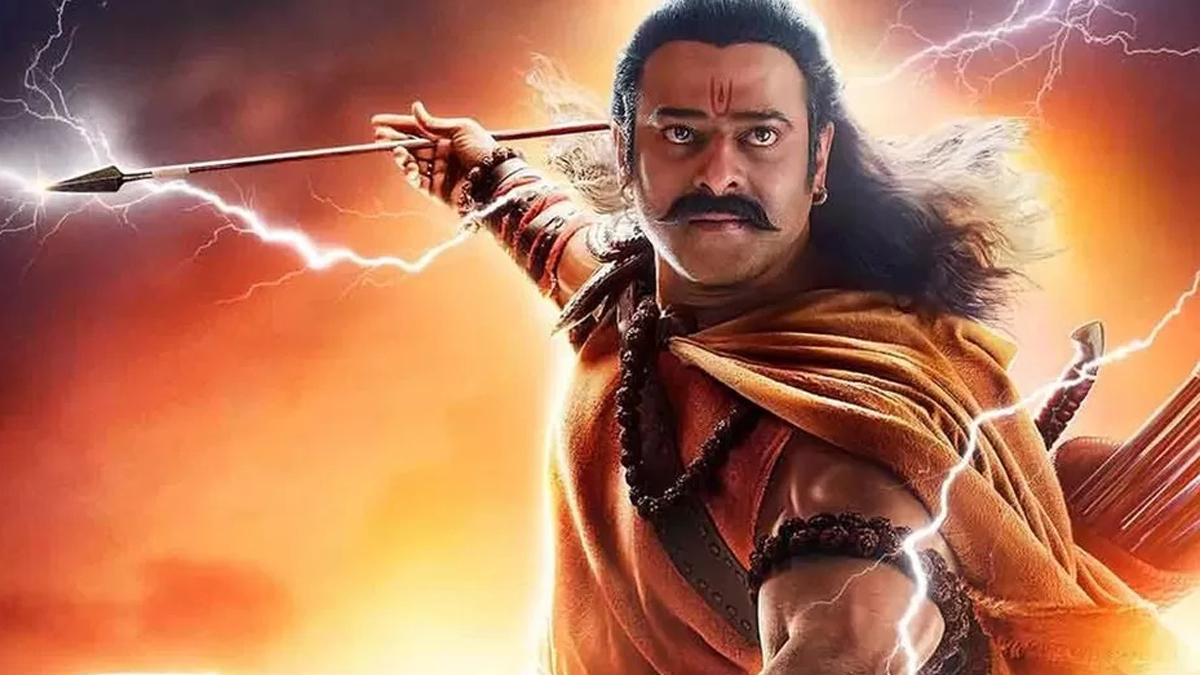
Why audiences turned against this Bollywood epic

Adipurush, a much-hyped, lavish Indian film, has suffered a box-office crash landing following a backlash from audiences and critics. The BBC’s Meryl Sebastian looks at what went wrong with the film.
Adipurush had all the elements of a blockbuster – a lead actor with a massive fan following, a story based on a revered Hindu epic, a massive budget and even endorsements from some leaders of the governing Bharatiya Janata Party (BJP).
It was the latest in a line of films that have claimed some connection with either Hindu religious beliefs or nationalism and in some cases, both. The formula worked for some but backfired for Adipurush – the people it was expected to please and entertain have turned against it.
The makers of Adipurush say the film is inspired by the Hindu epic Ramayana.
The Ramayana depicts the victory of the Hindu god Ram over the demon king Ravana after the latter kidnaps his wife, Sita.
The film, made in Hindi and Telugu languages, should have reversed a lacklustre quarter for Bollywood at the box office. But the downturn in its fortunes was swift.
Upon release, the film received near-unanimous negative reviews. Opposition leaders criticised the film while two cities in neighbouring Nepal banned all Bollywood films till an “objectionable” line was deleted from it.
The final punch came in the form of a backlash from audiences that took even the makers aback. Protests were held in different parts of India while some Hindu groups demanded a ban on the film. Adipurush’s director Om Raut and writer Manoj Muntashir received death threats and now have police protection.
Critics say Adipurush is among a string of recent films that aim at appealing to Hindu viewers. Some of them have also been accused of fuelling religious polarization. Films like The Kashmir Files and The Kerala Story – both of which were criticised by many for distorting facts and Islamophobia – were big hits at the box office.
Some have also objected to how Ravana – a devotee of the Hindu god Shiva, a talented musician and a powerful king – has been depicted in the film.
With kohl-rimmed eyes and in dark attire, “Ravana [in Adipurush] is modelled on Bollywood’s now popular image of the Mughal villain”, says writer and critic Sowmya Rajendran.

T SERIES, Actor Saif Ali Khan played the role of Ravana in Adipurush
The film was expected to meet the standards set by blockbusters films like SS Rajamouli’s RRR and Baahubali and Mani Ratnam’s Ponniyin Selvan which stood out for their compelling storylines, deftly-written dialogues, stunning set pieces and competent visual effects.
In comparison, critics say Adipurush seems like a school play with amateur acting and meme-friendly CGI.
They have lampooned its “video game” feel, “clunky graphics”, lack of imagination, references to Western fantasies like the Lord of the Rings and Game of Thrones, and two-dimensional storytelling.
Audiences took umbrage with its dialogues – many called the use of colloquial language disrespectful to the deities it portrayed. They also criticised the depiction of Ram – referred to by believers as “Maryada Purushottam” or the ideal man – as an angry god.
The film’s box office collapsed after its opening weekend, taking even trade analysts by surprise.
Made on a budget of approximately 5bn rupees ($61m, £47.8m), the film’s Hindi version alone was estimated to make at least 2bn rupees in the first week of its release. This will now end at roughly 1.3bn rupees, analyst Komal Nahta says.
“Since Monday, the film has seen a 75-80% dip in collections for its Hindi version alone,” Mr Nahta told the BBC. “And it continues to fall fast with every passing day.” A similar dip was also reported in earnings for its Telugu version.
The discontent seems to run deeper with Hindu groups and priests who demanded a ban on the film.
In Ayodhya, believed to be the birthplace of Ram, the chief priest of the Ram temple said the dialogues made his “blood boil”. The Hindu Mahasabha, a right-wing group, filed a police complaint over the film’s “wrong” costumes, illustrations and choice of words. The All Indian Cine Workers Association said the film hurt the sentiments of Hindus.
While the Ramayana has various iterations across Southeast Asia, in India, it is Valmiki’s Sanskrit poem that remains the most influential. Adipurush begins with a long disclaimer that this is the version it adapts from.
One of the most popular adaptations of the epic is a 1987 TV show, which journalist and author Dilip Mandal says became the definitive interpretation of Valmiki’s epic.
“The rigidity imposed by the 1987 version limited the cultural richness that localised interpretations can bring, leaving little room for diverse perspectives and nuances and inhibiting the potential for the story to resonate with different communities,” he wrote in The Print, calling Adipurush “just another chapter in the history of the re-invention of Valmiki’s Ramayana”.
Across India, people have grown up watching adaptations of the epic as plays staged in schools and festivals, embellished with songs and phrases popular in the region. In defence of his creative choices in Adipurush, writer Manoj Muntashir said he wrote the film in the storytelling tradition he had grown up hearing around his village in Uttar Pradesh.
Adipurush’s downfall is not in its failure to align with popular notions of the epic, Ms Rajendran says.
With its “terrible dialogues and shoddy world-building”, she calls it a “lazy film that doesn’t bother to delve into the richness of the epic” or understand the influence it has on people.

T SERIES, Across India, people have grown up watching adaptations of the Hindu epic
But film critic Rahul Desai finds the reasons for the film’s rejection as worrying and problematic as the film itself.
“There is no defending the movie, which looks to scale up the aggressive language of modern Hindu nationalism,” he told the BBC. “But the fact is that most people here are getting offended because they can’t handle the tampering of tradition.”
“We’ve reached a stage where Hindu mythology (like Ramayana and Mahabharata) cannot be touched,” he says. “People look at it as an attack on their truth, unlike historicals, where facts are regularly altered to suit hate-spreading political narratives.”
This why even a glimpse of newness in the film is being mocked, he says.
“It is true that a significant percentage of the Indian audience today buys into Hindutva narratives. But they also go to theatres to be entertained and get their money’s worth,” Ms Rajendran says. “They aren’t going to waste it on a lazy, insincere film.”
BBC
- Xi Jinping’s Controversial European Tour: Allegations of Influence and Corruption
- Knife Attack in China: Two Dead, 21 Injured in Yunnan Hospital
- Improvements Noted, More Work Needed for Women and Children, Says Minister Chaudhary
- Government preparing to bring Mass Communication Bill soon: Minister Sharma














Comments